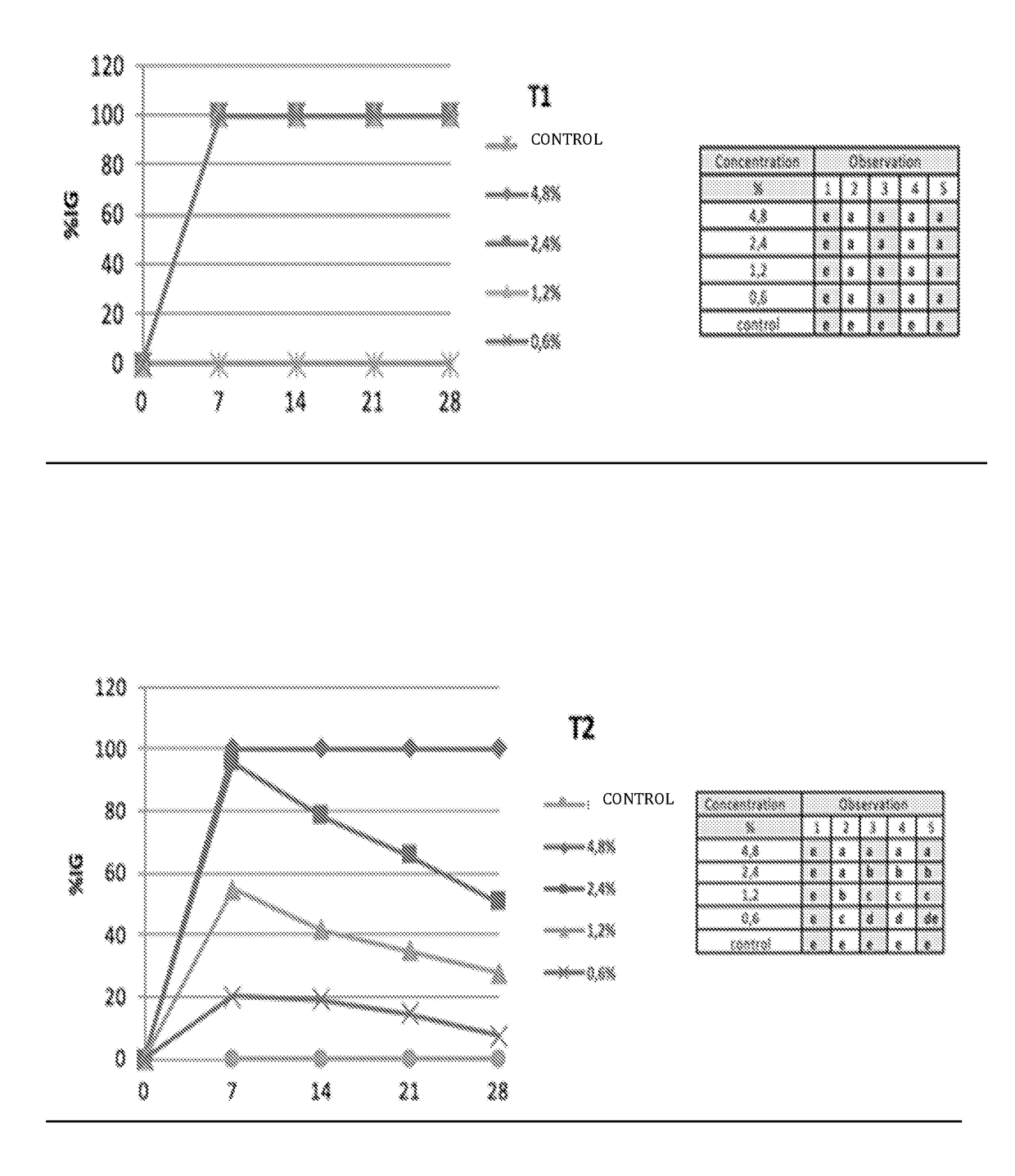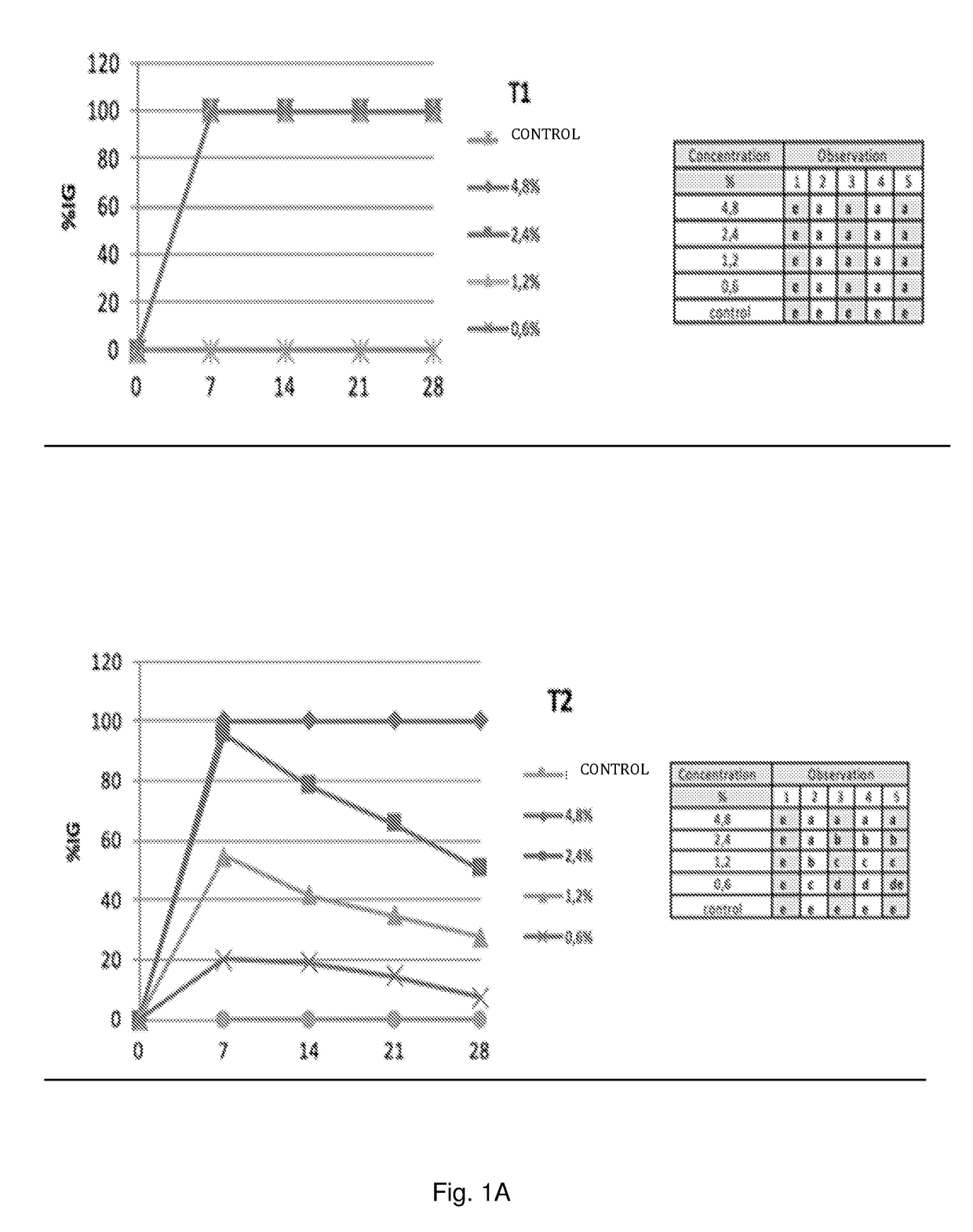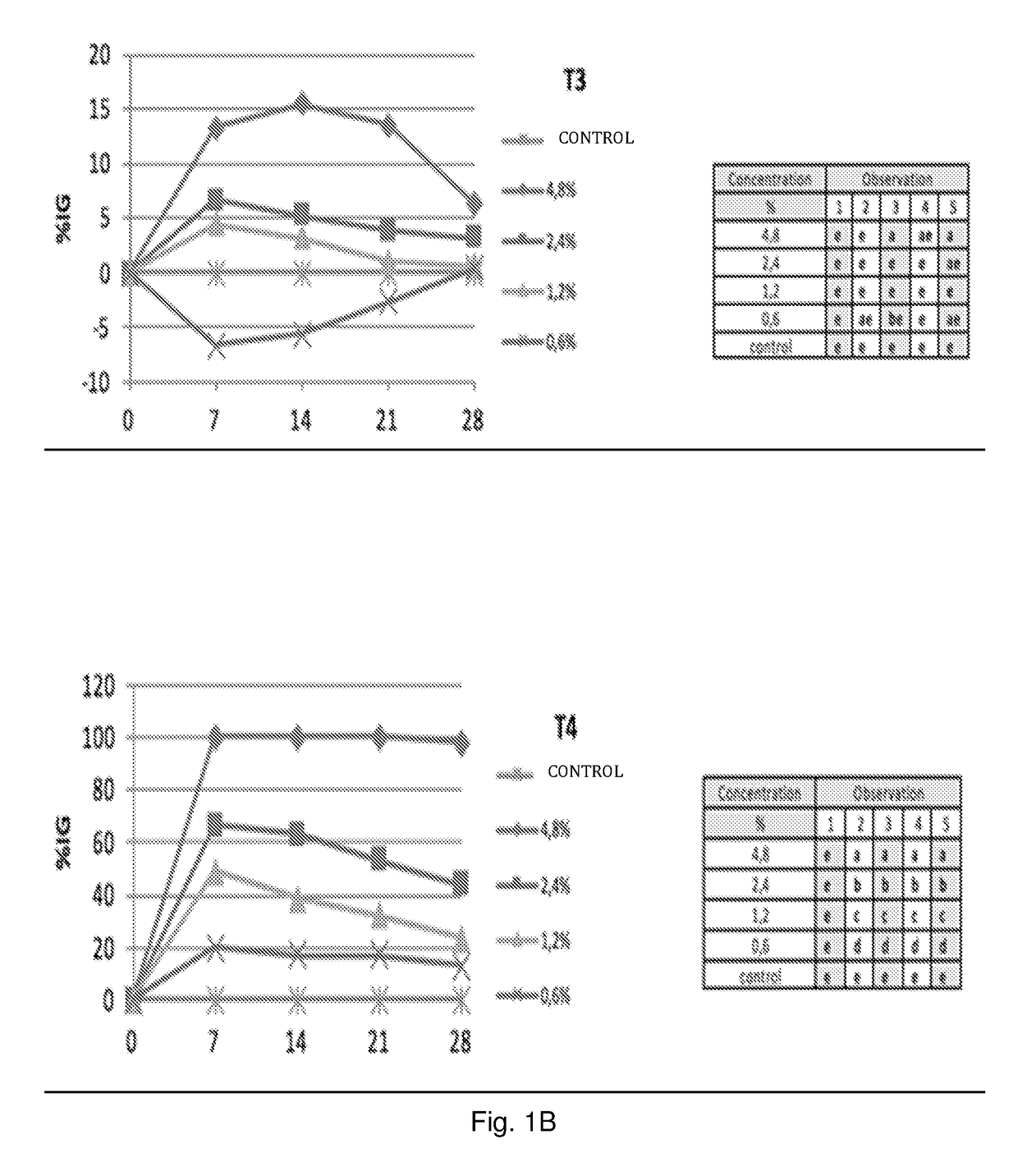Use of hydroxyapatite as a carrier of bioactive substances for treating vascular diseases in plants
- Summary
- Abstract
- Description
- Claims
- Application Information
AI Technical Summary
Benefits of technology
Problems solved by technology
Method used
Image
Examples
manufacturing example 1
[0093]The hydroxyapatite is synthesised by mixing phosphoric acid with a composition comprising calcium hydroxide and calcium carbonate previously dispersed in a suitable quantity of water.
[0094]The reaction requires about 12 to 48 hours, more particularly about 15 to 30 hours.
[0095]Following the suspension of microcrystals a solution of sulfate (II) pentahydrate and copper chloride is added, previously dissolved in a suitable quantity of water. Once these two solutions are combined, they are mixed to allow adsorption of copper ions in the inorganic crystals of hydroxyapatite.
[0096]The adsorption of the copper solution takes about 12 to 72 hours, more particularly from 24 to 60 hours.
manufacturing example 2
[0097]The hydroxyapatite is synthesised by mixing phosphoric acid with a composition comprising calcium hydroxide and calcium carbonate, previously dispersed in a suitable quantity of water.
[0098]The reaction requires about 12 to 48 hours, more particularly about 15 to 30 hours. Following the suspension of microcrystals, a suspension of sulphur and micronized sulphur dispersed in a suitable volume of water is added.
[0099]Once these two solutions are combined, they are mixed to allow adsorption of sulphur ions in the inorganic crystals of hydroxyapatite.
[0100]The reaction requires about 2 to 10 hours, more particularly about 4 to 6 hours.
manufacturing example 3
[0101]The hydroxyapatite is synthesised by mixing phosphoric acid with a composition comprising calcium hydroxide and calcium carbonate, previously dispersed in a suitable quantity of water.
[0102]The reaction requires about 12 to 48 hours, more particularly about 15 to 30 hours. Following the suspension of microcrystals, a suspension of essential olis dispersed in a suitable volume of water is added.
[0103]Once these two solutions are combined, they are mixed to allow adsorption of essential oils in the inorganic crystals of hydroxyapatite.
[0104]The reaction requires about 2 to 10 hours, more particularly about 4 to 6 hours.
PUM
 Login to View More
Login to View More Abstract
Description
Claims
Application Information
 Login to View More
Login to View More - R&D
- Intellectual Property
- Life Sciences
- Materials
- Tech Scout
- Unparalleled Data Quality
- Higher Quality Content
- 60% Fewer Hallucinations
Browse by: Latest US Patents, China's latest patents, Technical Efficacy Thesaurus, Application Domain, Technology Topic, Popular Technical Reports.
© 2025 PatSnap. All rights reserved.Legal|Privacy policy|Modern Slavery Act Transparency Statement|Sitemap|About US| Contact US: help@patsnap.com



